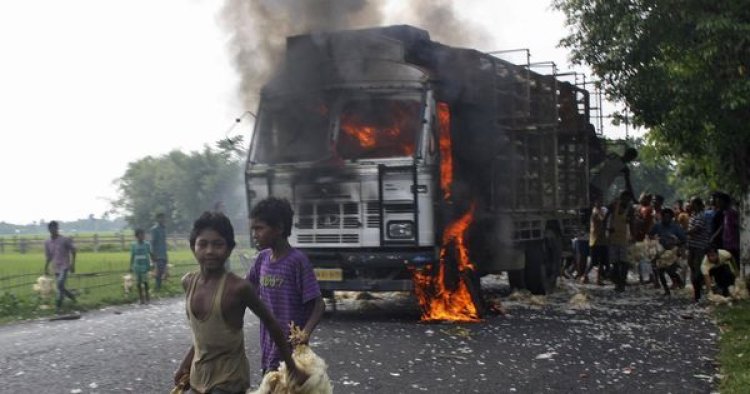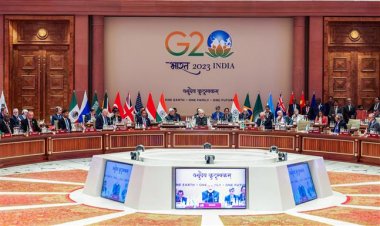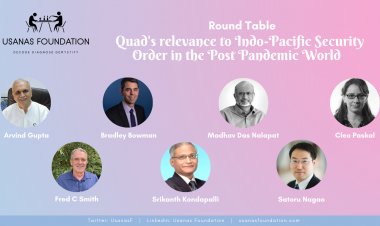The Expanding Footprint of Inter-Services Intelligence in India’s Eastern Front

Analysis
By Angana Guha Roy
Following the terror attacks in Pahalgam and New Delhi in April and November of this year, alarming reports have emerged regarding the growing influence of Pakistan’s Inter-Service Intelligence (ISI) in Bangladesh. Hafiz Saeed, the chief of Lashkar-e-Taiba, is reportedly expanding the group's network by dispatching his associates to train and radicalize local youth. Recently, Lashkar commander Saifullah Saif openly called for jihad against India, declaring, “Our people are active in East Pakistan (Bangladesh) and are ready to respond to India.” During his speech, he urged the audience to take up arms against India, with disturbing visuals showing even children among those gathered to listen.
Reports claim, during a recent visit of Pakistan’s Chairman of the Joint Chiefs of Staff Committee, General Sahir Shamshad Mirza, to Bangladesh an ISI representative was included in the delegation to set up intelligence-sharing cooperation between Pakistan’s ISI and Bangladesh’s Directorate General of Forces Intelligence (DGFI) aimed at monitoring the Bay of Bengal region and the airspace along India’s eastern border. Further, a dedicated ISI cell has been installed within the Pakistan High Commission in Dhaka.
Under Sheikh Hasina's Awami League governments (2009–2024), Bangladesh cracked down on ISI networks, dismantling many militant camps and limiting ISI influence through close India ties. Following Hasina's exit, Bangladesh under Yunus has rapidly expanded its military ties with Pakistan.
On June 18, a report from the International Crisis Group titled "Bangladesh/Myanmar: The Dangers of a Rohingya Insurgency" was published, stating that Armed Rohingya groups have begun recruiting from Cox's Bazar refugee camps, opening possibilities of active synergy with violent radical forces expanding in the country. According to the reports, on December 25 last year, representatives from four Myanmar rebel organizations — the Arakan Rohingya Salvation Army (ARSA), Rohingya Solidarity Organization (RSO), Islami Mahaj, Arakan National Defense Force (ANDF), and Arakan Rohingya Army (ARA) — gathered at a refugee camp in Cox’s Bazar, Bangladesh, forming a new alliance called the Four Brothers Alliance or the Rohingya Army.
Reported insights also reveal Inter-Services Intelligence (ISI) convincing the armed groups to collaborate for ‘effective coordination’ in their campaign to recover their homeland in Myanmar.
Additionally, Bangladesh’s strategic geography makes it vulnerable to the narco- terrorism nexus. Bangladesh is a significant transit point for arms and narcotics smuggling via maritime routes (which significantly contribute to regional instability and pose a direct national security threat, often linking with terrorist and insurgent activities), primarily through the Bay of Bengal and coastal areas like Chittagong and Cox's Bazar. The country's location between the "Golden Crescent" (Southwest Asia) and the "Golden Triangle" (Southeast Asia) drug production regions makes it particularly vulnerable to transnational criminal networks. In light of the current developments, India has heightened border vigilance and raised new garrisons in the east.
To add to India’s security concerns, an amplified ISI engagement on India’s eastern front increases the security vulnerability of not only the border regions but India’s Northeastern states, an important front in India’s Act East Policy. Pakistan reportedly actively supported separatist outfits from India’s Northeast since the late 1950s. Between 1991-2004, Pakistan’s ISI had trained batches of rebels belonging to different groups and equipped them with weapons.
Meanwhile, Pakistan's Inter-Services Intelligence (ISI) has a long history of using Nepal as a hub and transit point for anti-India operations, including smuggling counterfeit currency, arms, and terrorists into India. A report published by the European Foundation for South Asian Studies (EFSAS), Amsterdam, states that ISI’s use of Nepal as a veritable second front to target India through the use of terrorist proxies began in the mid-to-late 1980s. Its operations using the country as a transit point for the movement of Khalistani terrorists to and from India emboldened it to expand the scope of its anti-India operations to include the trafficking of explosives, weapons, and fake currency in huge quantities by the mid-1990s. The ill-equipped, ill-trained, and inexperienced security apparatus of Nepal contributed to the ISI’s confidence. The insanity of its operations reduced following India's capacity enhancement initiatives of the Nepalese security forces.
A recent National Investigation Agency (NIA) probe uncovered a large-scale racket funneling fake Indian currency from Nepal into India. According to Intelligence Bureau assessments, Nepal could become the next major front for ISI’s proxy war against India. According to recent reports, ISI operatives from Nepal were caught supplying Indian SIM cards that were used by the spy agency for espionage activities.
Incidentally, all the countries with an active ISI operative base at this point are going through political instability. An effective mechanism to eradicate sponsored terrorism would require an established structure of effective intelligence sharing, capacity enhancement and a coordinated network among the countries. Most importantly, it would require a democratically stable and elected government in the neighbouring countries, which at this point doesn’t exist. Purposefully, India needs to scale up its guard and intelligence further along its porous borders and unstructured trade and finance networks in the region.
Disclaimer: This paper is the author's individual scholastic contribution and does not necessarily reflect the organization's viewpoint.






















